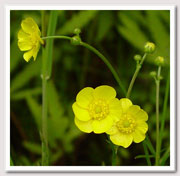'Mud Fever' & 'Sun Burn'
Many horses with white faces and/or white socks, suffer from 'sunburnt' noses, and/or chronic mud fever.
The first line of thought with mud fever is that it is caused by 'mud'.
The first line of thought with scabs on the nose is 'sunburn'.
However, the truth is that it can be a very complex issue that doesn't respond to external treatments.
This is because the primary cause of 'mud-fever' and 'sunburn' is neither mud nor sun but ‘photosensitisation’...
'Sun Burn'

A mild case from eating a very small amount of Clover (flecks) amongst her grass hay.
When this occurs on the muzzle, it resembles, but is not, sunburn. It is a reaction caused by eating these plant pigments which are exposed to UV rays in the vulnerable un-pigmented skin areas.
Some coloured horses can suffer on the large white patches anywhere on the body as can other stock like Fresian cows.
This explains why some horses that have 'heaps of white' never sunburn or get mud fever, while others do, chronically and exasperatingly!
Placing a 'curtain' over their nose for protection from UV rays is a huge help in prevention, however, this is tricky on the legs. There are vast numbers of topical applications for treating mud fever, which 'work' but often on some horses and not others. Quite often, just when you think you've got it beat, hey presto, it's back!
Preventing the horse eating the offending plants is obviously the best solution but not always the easy one!
Keep in mind that Rye Grass, Clover and Lucerne hay may also cause this skin photosensitivity. It is yet another really good reason to work out ways to change your pastures to encourage other species. See Horse Friendly Grasses

Handsome (above) is one of our horses who, unless we were out there daily with the protective cream for his nose, would suffer from what we thought was sunburn.
Since we have moved properties to where there is zero clover (we spray it out early spring every year) and we certainly don't feed any lucerne, he hasn't shown the slightest sign of any 'sunburn' and we have had several long hot summers.
This is because we have removed the cause. No need to plaster him with cream every day any more, we never even think about it. Neither have any of the other horses shown any sign of mud-fever.
Mud Fever
 Photosensitisation is caused by the horse (or cow) eating plants which have a high proportion of certain photodynamic (or fluorescing) pigments. These pigments enter the bloodstream and soon reach the un-pigmented skin of white faces and white socks, where they are exposed to UV rays and oxidise, thereby creating the oozy sores in the surrounding skin.
Photosensitisation is caused by the horse (or cow) eating plants which have a high proportion of certain photodynamic (or fluorescing) pigments. These pigments enter the bloodstream and soon reach the un-pigmented skin of white faces and white socks, where they are exposed to UV rays and oxidise, thereby creating the oozy sores in the surrounding skin.
Affected skin rapidly becomes reddened, painful and raised above areas of adjacent pigmented skin. Serum often oozes through the affected skin to form crusts in the hair. Soon, the dead skin becomes dry and parchment-like, and the hair and white skin slough off leaving ulcerated areas that may develop secondary bacterial infections, especially in muddy conditions, hence the name 'mud fever'. Yet the bacterial infection is usually secondary to the real cause which is ‘photosensitisation’.
What to do for Mud-Fever if it Does Occur:Firstly, eliminate rye, clover and Lucerne (Alfalfa) from the diet!

Apply Medical Grade Active Manuka honey to all the scabs. They don't seem to mind this being done!

Smother the honey all over the affected areas.

Then cover gamgee bandages with honey also and wrap the whole fetlock up.

After 36 hours, this bandage is removed - just look how much cleaner and healthier the area looks already!
This is the hoof of Ben - one of our resuce horses who suffered terribly from 'Mud Fever'.
Because there is no clover in his diet the mud-fever has not returned.
Ben is now a stunning, lovely natured, healthy horse who thoroughly enjoys life in our herd.
The Plants to Avoid...
Plants known to cause this kind of photosensitisation include Perennial Rye Grass (you might have guessed!) Clovers (especially White Clover), Alfalfa (Lucerne), St John's Wort (Hypericum perforatum) and Buttercup.
Many horses are grazing pastures that comprise these species.
'Hi Jenny.
I wanted to tell you of the success I've and with Premium NZ Horse minerals. I had real problem with one of my horses getting rain scald (when we hadn't had any rain). I really thought that it was mineral related nothing to do with climatic conditions. So with a change of grazing conditions and intro of the NZ horse minerals I have a horse that doesn't have scabs over his back and rump any longer.. No photos of before or after but the changes are outstanding...
Thanks so much'.
Mandi Bates
 Calm Healthy Horses
Calm Healthy Horses